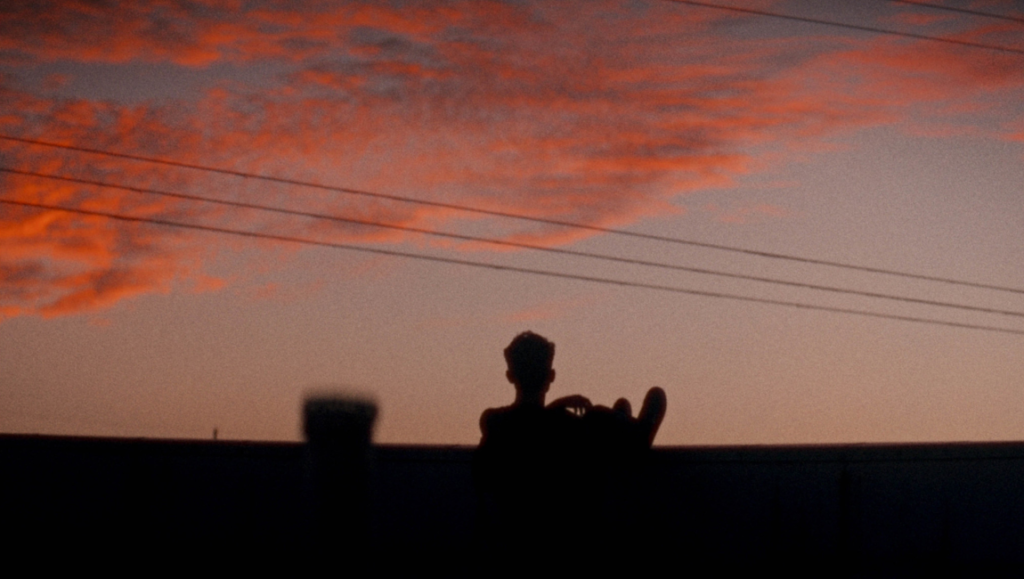Perhaps because artists are so often misfits, unable to easily fit in to the normal currents of society, the slacker remains one of cinema’s enduring subjects. Every Day in Kaimukī, the feature debut of Alika Tengan, finds its own layabout in Naz Kawakami, a radio DJ who lives in the eponymous neighborhood of Honolulu (and who also co-wrote the screenplay). The film very much belongs to a recent substrand of docufiction, in which non-actors play themselves in lightly fictionalized scenarios: here, as in real life, Naz has lived in Hawaiʻi his whole life and is contemplating a move to New York. The film is populated mostly by Naz’s actual friends and acquaintances, with two exceptions: his new radio station protégé Kaden (Holden Mandrial-Santos) and his long-term girlfriend Sloane (Rina White), whose acceptance into a sculpting graduate arts program in New York is providing the latest impetus in a long line of chances for Naz to leave home for the first time.
Every Day in Kaimukī thus operates somewhere in the register of a hangout film, flitting from interaction to interaction as Naz goes skateboarding with his friends and Kaden, has earnest but often wary conversations with Sloane, and makes preparations for leaving, whether by giving away possessions around the house to random people or calling airline representatives to try to figure out how to fly his cat to New York. Particular attention is paid to both his genuine passion and skills — his hosting skills are quite engaging, especially signaled by the superb soundtrack largely culled from his actual experience in radio — and his frequent shortsightedness, wherein things seem to happen to him more often than the opposite, and he frequently forgets to help out around the apartment.
The rotating emphasis on certain friends or friend groups, largely for the better, takes away the more expected focus on Naz and Sloane’s relationship and instead orients Every Day in Kaimukī around both the allure and dissatisfaction that Naz has towards Hawaiʻi. The film itself clearly loves Honolulu, dedicating a good deal of time to simply observing Naz roaming along the streets by day and night, while also recognizing Naz’s legitimate desire to leave while he still can, before he gets further into a rut of routine and contentment. That push-pull between discovery and complacency is further heightened by the pandemic-era setting, which makes the prospect of staying all the more attractive to Sloane and functions as a primary source of conflict.
Every Day in Kaimukī’s narrative can sometimes feel a little too pointed, ushering Naz along the path to where he can feel comfortable setting out for New York on his own, but it’s balanced out by Tengan’s feel for mood, for the rhythm of interactions and images that verge on dreaminess. The largely handheld cinematography is digital but takes place in the Academy ratio and has the general warmth and haziness of 16mm; one especially well-judged tracking shot alternately sticks with and pulls away from Naz as he makes several trips from his apartment to his car and back. Such moments capture the fluidity that the film has in its best stretches, especially in a single night where Naz goes on a tear of drunken insults against nearly every major character previously seen. The resolution to all of this, including his relationship with Sloane, is rather unexpectedly generous and compassionate, a series of moments that cements the film’s feeling for its characters and their place; even the unreasonably cold New York is given its own warmth in both the new (a friendly roommate) and the old (the cat), a dichotomy perfectly in sync with its protagonist’s point of view.
Published as part of Sundance Film Festival 2022 — Dispatch 5.


Comments are closed.